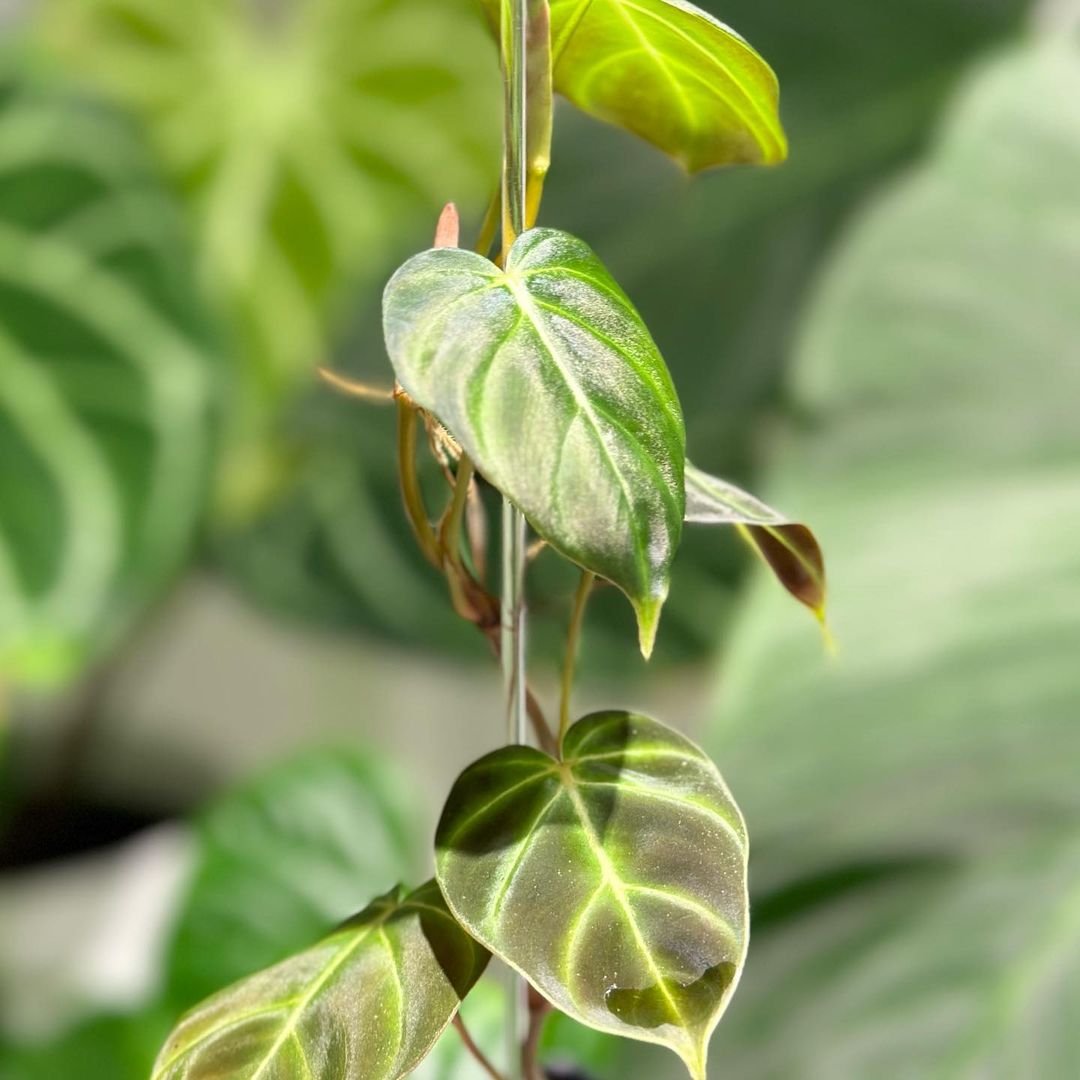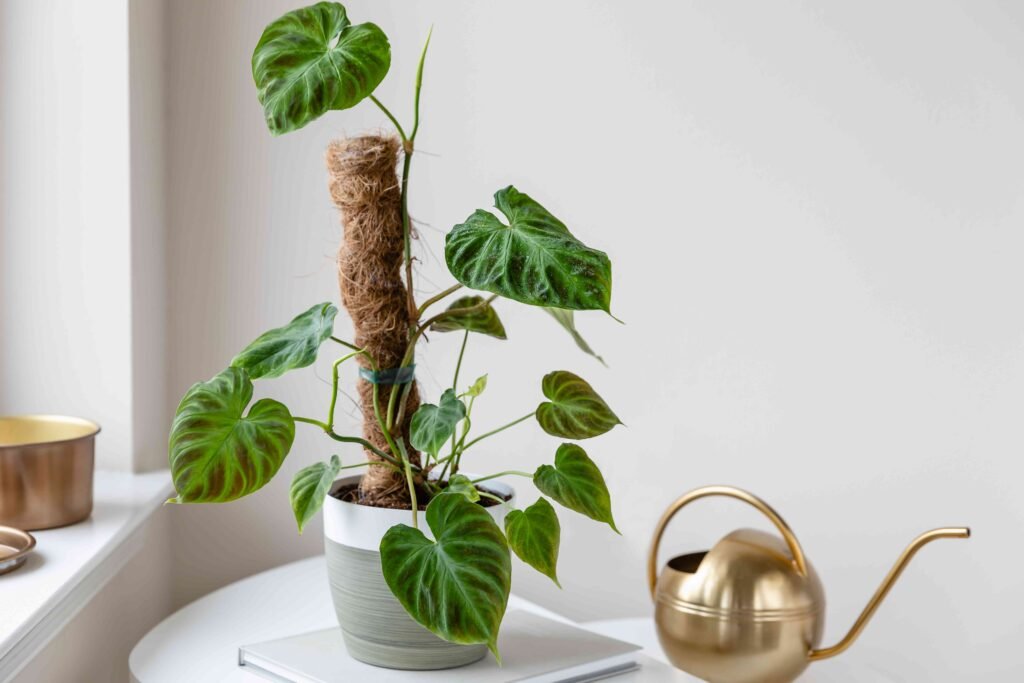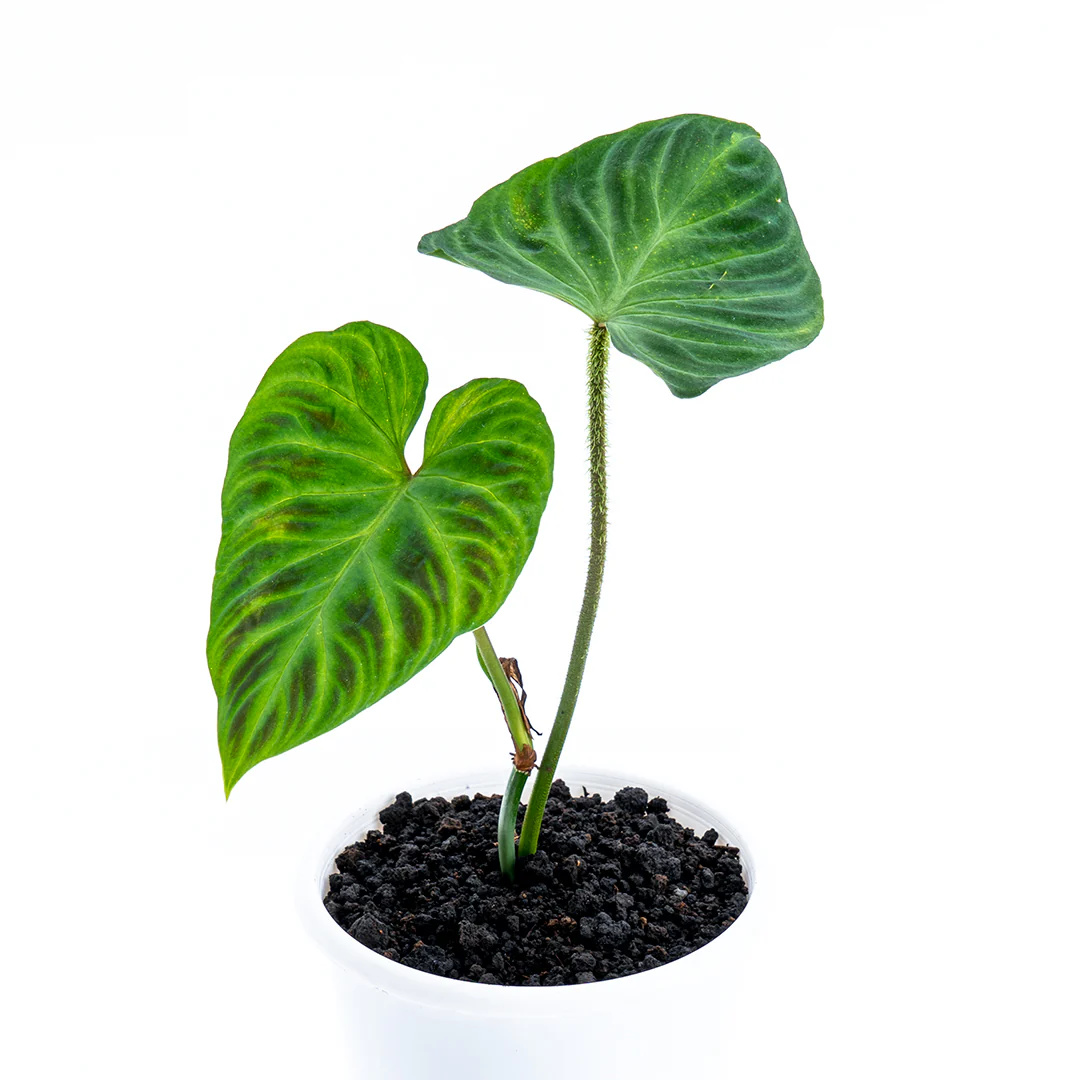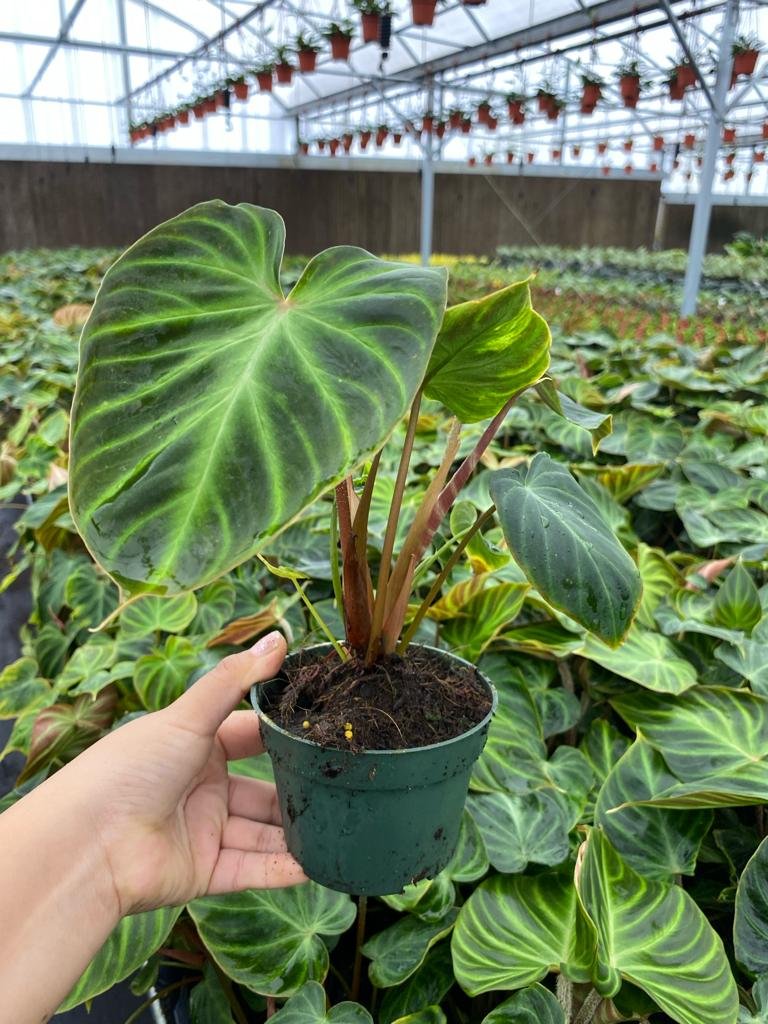The philodendron verrucosum, or ridged philodendron, is a unique and eye-catching tropical plant. This care guide covers light, water, soil, fertilizing, pruning and troubleshooting needs to keep it thriving indoors as a houseplant.
The philodendron verrucosum, also known as the ridged philodendron, is a beautiful and unique tropical plant. It is native to rainforests in Central and South America. This climbing aroid stands out with its deeply ridged, heart-shaped leaves and reddish-brown stems.
As a houseplant, the verrucosum philodendron adds an exotic, jungle-like feel to your indoor space. While relatively easy to care for once you understand its needs, there are some important things to know. This care guide covers all the essentials for keeping your ridged philodendron healthy and happy.
Light Requirements

The verrucosum philodendron does best with bright, indirect light. Aim to place it near an east or west-facing window. Direct sunlight can burn the leaves.
In lower light conditions, the plant will have smaller leaves and slower growth. Too little light also increases the risk of pests and diseases. With the right balance of bright, filtered rays, you’ll be rewarded with larger, more dramatic foliage.
Water Needs

Proper watering is key for the ridged philodendron. The soil should be kept evenly moist but not soaked. Allow the top inch or two to dry out slightly between waterings.
During the spring and summer growing season, you’ll need to water more frequently – about once or twice per week. In winter when growth slows, just water when the top half of the potting mix is dry.
The best way to determine if your plant needs water is to check the soil with your finger or a wooden skewer. Signs of underwatering include wilting, curling leaves and dry potting mix. Overwatering leads to yellowing leaves and potential root rot.
Use lukewarm water and avoid getting the leaves wet when possible as this can lead to fungal issues. Empty any drained water from the saucer or cache pot as well.
Temperature and Humidity

Being tropical by nature, the verrucosum philodendron prefers warm temperatures between 65-85°F. It can tolerate temperatures down to about 55°F in winter but no lower.
Higher humidity is ideal, around 50% or more. Many homes are on the dry side, so take steps to increase moisture around the plant. Use a humidity tray, humidifier or frequently mist the leaves with a spray bottle.
Avoid placing your philodendron near cold drafts, heat vents or excessive heat which can cause stress. Consistent warmth and moisture will keep it thriving.
Soil Mixture

A loose, well-draining soil mix is crucial for the verrucosum philodendron’s health. A combination of peat moss, perlite or vermiculite, orchid bark and compost works well.
The goal is a light, chunky potting medium that provides plenty of oxygen flow to the roots while still retaining some moisture. Adding orchid bark or moss poles to support the climbing stems helps mimic the plant’s natural environment.
If using a standard potting mix, amend it with one-third part perlite or vermiculite and some orchid bark chips to improve drainage and aeration.
Fertilizing

For best growth, feed your ridged philodendron during the spring and summer with a balanced liquid fertilizer every 4-6 weeks. Look for one labeled for use on houseplants.
You can also use a slow-release fertilizer at the start of the growing season in spring. This provides steady nourishment over several months.
Avoid fertilizing in the winter months when growth naturally slows. Too many nutrients at this time can lead to fertilizer burn and other issues.
Repotting and Pruning

The verrucosum philodendron grows quite large over time. When rootbound, repot in spring to a container 2-4 inches wider than the previous one. Use a fresh, well-draining potting mix.
Mature plants can reach over 6 feet tall with stems 3-4 feet long. You may need to provide a trellis, moss pole or other structure for support as it climbs. Gently attach stems with plant clips or soft ties.
Prune off any dead, damaged or discolored leaves or stems as needed. This not only improves appearance but prevents pests and diseases from taking hold. Use clean, sterilized pruners to avoid spreading pathogens.
Common Problems

While generally trouble-free, several issues can impact the ridged philodendron at times. Let’s review some of the most common concerns.
Leaf Discoloration: Yellow leaves indicate overwatering; brown crispy areas suggest too much direct sun and leaf burn. Adjust water and light accordingly.
Pests: Spider mites, mealybugs, scales and aphids can all become problems. Use insecticidal soap or neem oil to treat infestations.
Root Rot: Caused by persistently soggy soil and poor drainage. Affected plants wilt and decline. Repot in a better draining mix and don’t overwater.
Leaf Spots: Small yellow or brown spots that spread can indicate fungal or bacterial diseases which thrive in wet, stagnant conditions. Improve air circulation.
With proper philodendron verrucosum care focusing on the right soil, water, light and humidity, you can avoid most issues. Quickly addressing any problems that do arise is key.
Is the Verrucosum Philodendron Toxic?

Yes, all species of philodendron are considered toxic to humans and pets if ingested. This is due to the presence of insoluble calcium oxalate crystals in the leaves and stems.
Symptoms of philodendron toxicity include oral irritation, excessive drooling, vomiting, and difficulty swallowing. The sap can also cause skin irritation in some individuals.
For this reason, take care to keep the verrucosum philodendron out of reach of curious children or pets who may chew on the leaves or stems. The level of toxicity is relatively low, but it’s still wise to exercise caution.
Where to Buy

Thanks to its eye-catching foliage, the verrucosum philodendron is becoming more widely available. You may find it for sale at your local nursery, especially those specializing in tropicals and indoor plants.
Online retailers like Steve’s Leaves, Logee’s Plants and Costa Farms are other great sources to purchase this unique philodendron species. Just be sure to buy from a reputable grower.
Whether you’re an experienced plant parent or new to houseplants, the verrucosum or ridged philodendron makes a stunning, easy-care choice. With its large, ridged leaves and vining, climbing habit, it adds tropical vibes to your indoor space.
By providing the proper care – bright, filtered light, consistent moisture, high humidity, and a well-draining soil mix – this philodendron variety rewards you with lush, vigorous growth for years to come. A true showstopper!
Pingback: Philodendron Verrucosum Care Guide | Gardening ...
Pingback: Which Hostas Can Grow in the Sun? Gardeners Schools